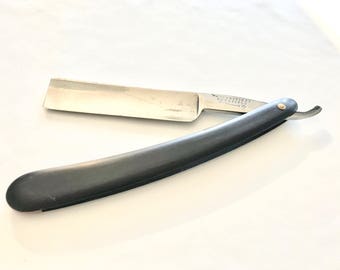That’s the trouble
If you notice what starts them (or think you do – part of being a migraineur is feeling like a deluded hypochondriac) you can very quickly become a sad avoidant thing who relinquishes activity after activity, food after food, never going out, never seeing people, never traveling, until all you have is a darkroom instead of a life. This terrifies me, and I discovered this year that my prophylactic avoidance of avoidance, this willed oblivion, is well documented. Here’s an entry from an old journal I found this year. It’s dated , long before I knew the things I got were migraines: “Woke up feeling sleepy and anticipatory, the way I probably feel before each of these monster headaches come along, if I bothered to pay attention.” The way I probably feel. My advice to self has always been don’t look too closely for cause and effect, because the real triggers are buried in all the noise. The noise is life, pretty much, and even if you shut everything out, a headache will find you in the silence.
So ignoring bodily cues becomes a habit. What’s interesting about migraines, though, is that they ladle you back into the animal self you spend all your energy ignoring. No “virtual” life on the internet or absorption in a book or Jedi mind tricks for not feeling what you’re feeling will let you escape the fact that you’re meat and nerves. You are in a body and you will notice it, by gum, and you won’t be able to notice very much else. When a headache hits, I am bovine.
This is all a preface to the point, which is that migraineurs get advice all the time. The bulk of the advice I’ve received this year (and others) has had to do with headaches. That’s not a complaint; I’m interested, and I really will try anything, but there does come a moment – when you’ve tried acupuncture and yoga  and vitamin supplements and drinking lots of water and three different diets and prophylactic medication and meditation – when it all feels a bit like ways to fix the resolution and color cast of a photo that’s irretrievably blurry.
and vitamin supplements and drinking lots of water and three different diets and prophylactic medication and meditation – when it all feels a bit like ways to fix the resolution and color cast of a photo that’s irretrievably blurry.
Then there’s the medical advice. Drink water. Exercise. Get on a regular sleep cycle. My doctor, to whom I’d confessed none of the above, said to try – actively – to bring back some of the things I’d unconsciously stopped doing out of fear of headaches. “Oh, I don’t do that,” I said. “Are you sure?” she said. “I know you think you don’t.”
Step 1. Actively avoid triggers. This is the planning phase. Keep a headache diary. Feel in control for the first time in life.
You can beat these headaches with charts and systematic elimination of foods!
Step 2. Realize how imprecise or broad your triggers are and how paralyzing avoiding them might actually turn out to be. Decide you don’t want to live your life preemptively. Actively avoid avoiding things.
Step 4. End up passively, through inertia, not going to stuff, not seeing friends, not making plans. You don’t know it yet, but you’re back at Step 1, minus the illusion of control.
You thought you’d stopped structuring your life around avoidance, but when you stop and think about your daily patterns, avoidance is everywhere; it’s just gone underground, so much so that you can no longer distinguish a true preference from an avoidant technique. When someone asks me to coffee, my default response is “no.” I like the person in question. I like coffee. I like talking. I don’t know where the “no” is coming from. But out it comes, and I confabulate to make sense of it. I have too much work, I’m tired, etc., but it feels like I’m lying. Why is my default programming “no”? Headaches, of course. Just as your body develops an aversion to whatever you ate prior to getting the stomach flu, even though it had nothing to do with it, mine has decided that social engagements correlate with headaches. How do you get out of this maze?




